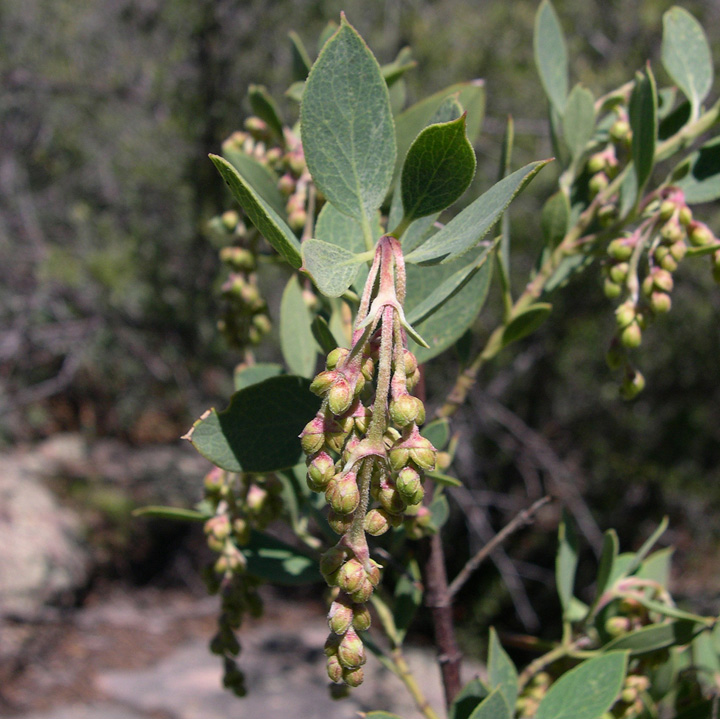Garryaceae
|
Garryaceae |
|
|
PLANT: Dioecious shrubs or small trees, ours to 3m tall. LEAVES: opposite, evergreen, exstipulate, ours elliptic to ovate-elliptic; petioles of a pair connate; blades leathery, the margins entire to papillate-denticulate, sometimes more or less undulate. INFLORESCENCE: catkins or catkin-like racemes, unbranched (or branched at base), usually pendulous from tips of branches. FLOWERS: small and reduced, 1-3 in axils of bracts, the bracts opposite, 4-ranked, basally fused; staminate flowers pedicellate, the perianth segments 4, apically connate, the stamens 4, distinct, alternating with perianth segments, the anthers 2-celled; pistillate flowers sessile to subsessile, the perianth absent or vestigial, the ovary inferior, 1-locular, the styles 2, persistent. FRUIT: berry-like, globose, dark blue-black to whitish gray at maturity, becoming brittle when dry. SEEDS: usually 2, subellipsoid, dark. NOTES: 1 genus, 14 species in w and sw N. Amer., Mex., C. Amer., Greater Antilles. Dahling, G.V. 1978. Contr. Gray Herbarium 209:3-104; Daniel, T.F. 1993 Garryaceae. Pp. 664-666 in J. C. Hickman (ed.), The Jepson Manual: Higher Plants of California University of California Press, Berkeley. The extensive intergradation commonly found among taxa in CA is not evident in AZ. REFERENCES: Puente, Raul, and Thomas F. Daniel. 2001. Garryaceae. J. Ariz. - Nev. Acad. Sci. Volume 33(1). |
|
